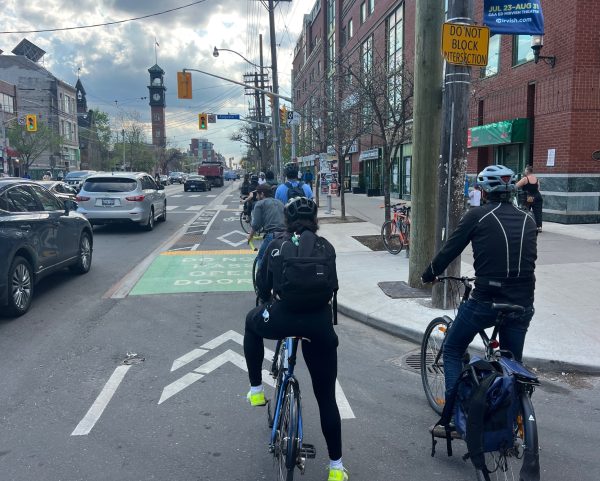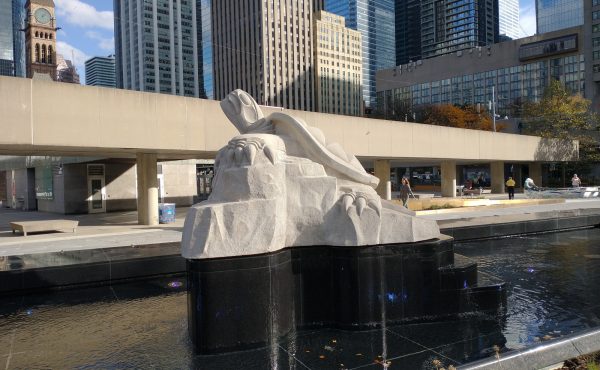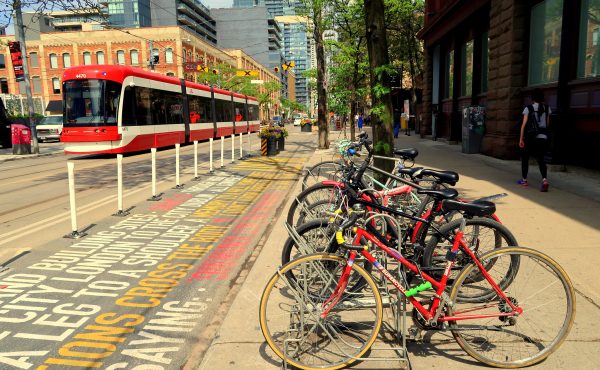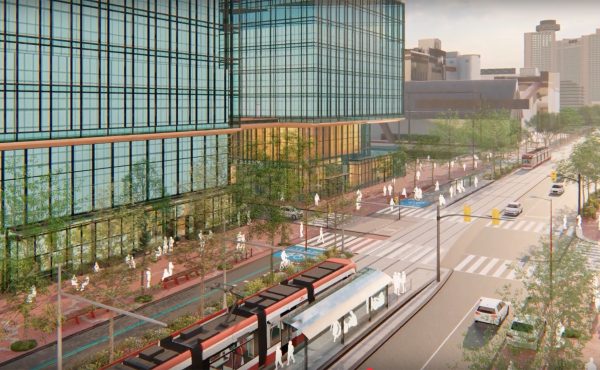At a time when Washington has launched a scorched earth attack on virtually all federal climate policies, the Ford government’s hyper-partisan campaign to tear out Toronto bike lanes feels, well, positively Trumpian.
Turns out we’re not entirely alone in the Jurassic Park club. In the past few years, a right-of-centre Berlin mayor has removed cycling infrastructure, even as Paris continues to break new ground in re-programming its roads to enable far more cycling while severely limiting cars and on-street parking.
Berlin, where car ownership was apparently low-ish because of the Cold War, is also throttling the planned development of new bike lanes and rejects Paris’ strategy of imposing additional fees on space-hogging SUVs, according to Deutsche Welle (DW). What mitigates Berlin’s political backsliding, of course, is the city’s truly vast multi-modal transit system, which carries 1.6 billion riders per year.
As we wait for the outcome of the legal challenge on the bike lane legislation, a question hovers at the edge of this ridiculous partisan fight: is it possible to advance more compelling policy arguments that would persuade Queen’s Park to rein in an expensive, dangerous and highly disruptive exercise?
I posed this frustrating question to a team of walking and cycling advocates invited to speak at the International Transport Forum’s 2025 summit, the theme of which is “resilience to global shocks.” Ford, admittedly, is a local shock, but they’d heard of his antics on the other side of the Atlantic.
Toronto, says Bronwen Thornton, CEO of Walk21, a U.K.-based advocacy group, was well known for its efforts to show that bike lane expansion created an “uplift” for local retailers. “The current government is saying, `Well, we’re going to take out bike lanes’… where they’d studied and found it’s the retailers that were arguing [that] their local vibrancy and their local viability was dependent on the walking and cycling. You have to just keep popping those bubbles, those assumptions about how people move around their communities.”
To that end, the Brussels-based European Cyclists Federation has just put out a series of policy prompts to help governments promote active transportation, says CEO Jill Warren. She points to a host of familiar benefits (e.g., health, air quality, fewer short car trips), as well as more unexpected ones, such as the way cycling can prove to be essential in the aftermath of natural disasters. After the intensely destructive flooding in Valencia, Spain, last fall, thousands of cyclists pitched in to help deliver assistance to communities whose roads and bridges had been destroyed.
Thornton, however, says that one of the most important arguments comes from recent policy research on the nature and dynamics of congestion as well as the role that active transportation plays in easing traffic.
There’s a preaching to the choir quality to the assertion that adding bike lanes takes cars off the road. Detailed transportation analysis, carried out a decade ago in several chronically clogged European cities (Budapest, Sofia, Lisbon) by an EU project dubbed FLOW, proposed a more holistic approach.
In particular, the analysts used granular mobility data and modelling to empirically demonstrate the impact of walking and cycling on congestion. They also offered up more comprehensive techniques for policy-makers to assess how the entire transportation network is functioning, applying measures such as delays and service levels to all forms of mobility, not just cars (or cars and surface transit).
No one will be too shocked to discover that transportation planners and policy-makers don’t pay much attention to congestion-related delays for cyclists or pedestrians. Nor, as a rule, do they make much effort to conduct serious cost-benefit analyses when trying to weigh options — a failure we’re seeing play out in real time as the city seems to be inching away from high-level plans to add bus priority lanes for Bathurst and Dufferin streets.
What FLOW’s “multi-modal transport analysis methodology” does is combine all the variables — including vehicle occupancy — into one metric, which focuses on “person-based” delays rather than the speed of vehicles moving along a certain roadway, the much more typical approach. “It points out the multimodal transport system’s capacity reserve and highlights the potential for underused modes to take up excess demand,” it asserts.
Thornton points to a specific example of how this thinking turned into policy — Paris’ move to eliminate a great deal of street parking. Municipal officials, she says, “demonstrated that there was enough [off-street parking] that they didn’t need to have on-street parking.” She adds that New York City, during the Janette Sadik-Khan era in the late 2000s, carried out a similar evaluation, on traffic flows, when she closed off Times Square and then built out Manhattan’s bike lane network.
I’m under no illusion that a premier who wants to bankrupt the province on a literal traffic sewer under Highway 401 will have much time for this kind of thinking. Yet Ford’s determination to turn back the clock strongly suggests that city officials — who are now in the process of hiring a “transportation czar” — need to find more persuasive empirical tools to publicly justify road infrastructure such as bus-only corridors, bike lanes, pedestrian-only zones, widened sidewalks, scrambles and anything else that threatens the supremacy of Toronto drivers.
Ford, someday, will be gone. But there will be other politicians who again need to be shown that the false and polarizing ideas he has injected into the city’s bloodstream were actually the cause of the problem, not the cure.





One comment
Our ‘carservative’ Premier is full-on Axe the Facts, a prime example is how the presence of massive-capacity subways on Bloor, Yonge, and University Ave are ignored in their view of the transportation corridor. There’s only been over a half-century of existence for these 30K an hour workhorses, and especially in western Toronto, are the faster way to travel for many. Alas, not enough tunnel vision for Mr. Ford and Sarkaria to see these subways – or not enough new concrete, or devilopment potential. And they can’t even manage to get Eglinton up and running yet, so why are they allowed to build even more?
For many of us in the old core, these bike lanes are finally respectful routes, as they’re quite direct on main roads, and they’ve also been some subway easing for cost of paint.